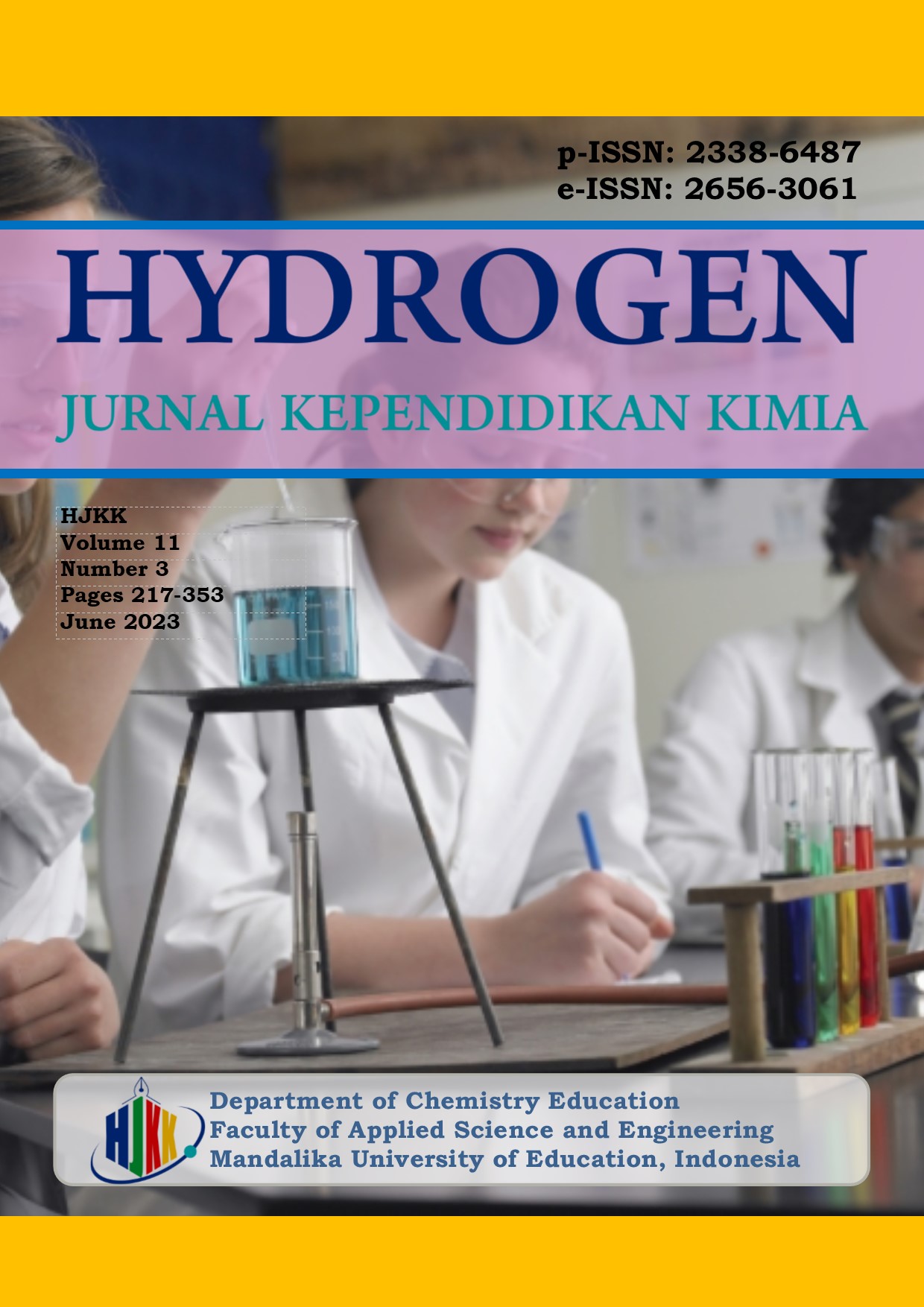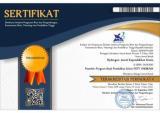Sustainable Energy Cyclic System: Massive Operation and Integrated System for Optimizing Renewable Energy Sources
DOI:
https://doi.org/10.33394/hjkk.v11i3.7834Keywords:
sustainable energy cyclic system, massive operation, integrated system, renewable energyAbstract
References
Aftab, Rafiq Muhammad, Liguo Zhang, and Chih-chun Kung. 2021. “Renewable Power Potential from Municipal Solid Waste : A Case Study in Jiangxi , China.â€
Ardiansyah (2017). Kajian Potensi Limbah Kotoran Manusia Sebagai Pembangkit Listrik Tenaga Biogas Di Kota Pontianak. 9(2), 53–60.
Asmara, G. dan Guitara P. 2022. Waspada. Jokowi Akui Ada Kelangkaan Energi. URL: https://www.cnbcindonesia.com.
Bhalavi, Jyoti, and Ruchika Saini. 2018. “Performance Enhancement of Solar Still Using Energy Storage Material.†8(4).
Bibra, Mohit et al. 2023. “Food Waste to Bioethanol : Opportunities and Challenges. Food Waste to Bioethanol : Opportunities and Challenges.
Borzkurt, B. 2019. Solar Cel and Solar Panel production.URL: https://www.researchgate.net.
Chang, Yu, and Menachem Elimelech. 2013. “Potential of Osmotic Power Generation by Pressure Retarded Osmosis Using Seawater as Feed Solution : Analysis and Experiments.†Journal of Membrane Science 429: 330–37. http://dx.doi.org/10.1016/j.memsci.2012.11.039.
Emamia, Y. 2012. A Brief Review about Salinity Gradient Energy. Urmia. International Journal of Smart Grid and Clean Energy.
Emetere, Moses E, L Chikwendu, and S A Afolalu. 2022. “Improved Biogas Production from Human Excreta Using Chicken Feather Powder : A Sustainable Option to Eradicating Poverty.†2100117.
Güney, Taner. 2019. “Renewable Energy , Non-Renewable Energy and Sustainable Development Taner Güney.†International Journal of Sustainable Development & World Ecology 26(5): 389–97. https://doi.org/10.1080/13504509.2019.1595214.
Handayani, N A, and D Ariyanti. 2012. “Potency of Solar Energy Applications in Indonesia.†1(2): 33–38.
Itano, Tomoaki, Keito Konno, Mustafa Mohammed Aljumaily, and W Abeer. 2019. “Assessment of the Performance of Osmotically Driven Polymeric Membrane Processes Assessment of the Performance of Osmotically Driven Polymeric Membrane Processes.â€
Konvacs, K.I., Acs,N.,Wirth, R., Rakhely,G., Strang, O., Herbel, Z., Bagi, Z.2012. Improvement of Biogas Production by Bioaugmentation. Biomed Research International. (1): 1-7
Kummamuru, B. 2016. WBA Global Bioenergy Statistics 2016. Edisi 1. WBA Association. Stockholm. Swedia.
Lam, Yan Y, and Eric Ravussin. 2016. “Analysis of Energy Metabolism in Humans : A Review of Methodologies.†Molecular Metabolism (September): 1–15. http://dx.doi.org/10.1016/j.molmet.2016.09.005.
Mawad, Mustafa Mahmoud. 2020. “Origin of Petroleum : A New Theory of Its Formation.†: 63–72.
Micale, G, A Cipollina, and A Tamburini. 2016. Sustainable Energy from Salinity Gradients Salinity Gradient Energy. Elsevier Ltd. http://dx.doi.org/10.1016/B978-0-08-100312-1.00001-8.
Patil, Anish, Gagandeep Singh, Somkaran Bhardwaj, and S D Lembhe. 2022. “Improvement of Solar Energy by Mirror.†(June 2019).
Renewable, International, and Energy Agency. 2014. “SALINITY GRADIENT ENERGY.†(June).
Ripna, H. 2015. Pembangkitan Energi Dari Air Menggunakan Pressure Retarded. ResearhGate, 1-10.
Rizwan, Mohd, Sirajuddin Shaikh, and Suvarna Labade. 2018. “A Review Paper on Electricity Generation From.†(October).
Riswanto, R dan Sodikin, S. 2018. Potential of Renewable Energy Biogas Plant (Hyacith). URL: https://jurnal.uns.ac.id.
Setiawan, A. 2021. Membenahi Tata Kelola Sampah Nasional. URL: https://indonesia.go.id.
Syvitski, Jaia et al. 2020. “Resultant Geological Impacts Beginning around 1950 CE Initiated the Proposed Anthropocene Epoch.†: 1–13.
Taufiqurrahman, Asa et al. 2020. “Overview Potensi Dan Perkembangan Pemanfaatan Energi Air Di Indonesia.†1(3): 124–32.
Teknik, Magister et al. 2017. “Kajian Potensi Limbah Kotoran Manusia Sebagai Pembangkit Listrik Tenaga Biogas Di Kota Pontianak.†9(2): 53–60.
Ulgiati, Sergio et al. 2010. “Energy Options Impact on Regional Security.†Media 00: 1–36. http://www.springerlink.com/index/10.1007/978-90-481-9565-7.
Yuwono, S., & Pratama, N. W. (2021). Energi dan Kelistrikan : Jurnal Ilmiah Manfaat Pengadaan Panel Surya dengan Menggunakan Metode On Grid Energi dan Kelistrikan : Jurnal Ilmiah. 13(2), 161–171. https://doi.org/10.1080/13504509.2019.1595214
Downloads
Published
How to Cite
Issue
Section
Citation Check
License
License and Publishing Agreement
In submitting the manuscript to the journal, the authors certify that:
- They are authorized by their co-authors to enter into these arrangements.
- The work described has not been formally published before, except in the form of an abstract or as part of a published lecture, review, thesis, or overlay journal.
- That it is not under consideration for publication elsewhere,
- That its publication has been approved by all the author(s) and by the responsible authorities – tacitly or explicitly – of the institutes where the work has been carried out.
- They secure the right to reproduce any material that has already been published or copyrighted elsewhere.
- They agree to the following license and publishing agreement.
Copyright
Authors who publish with Hydrogen: Jurnal Kependidikan Kimia agree to the following terms:
- Authors retain copyright and grant the journal right of first publication with the work simultaneously licensed under a Creative Commons Attribution License (CC BY-SA 4.0) that allows others to share the work with an acknowledgment of the work's authorship and initial publication in this journal.Â
- Authors are able to enter into separate, additional contractual arrangements for the non-exclusive distribution of the journal's published version of the work (e.g., post it to an institutional repository or publish it in a book), with an acknowledgment of its initial publication in this journal.
- Authors are permitted and encouraged to post their work online (e.g., in institutional repositories or on their website) prior to and during the submission process, as it can lead to productive exchanges, as well as earlier and greater citation of published work.
Licensing for Data Publication
Hydrogen: Jurnal Kependidikan Kimia uses a variety of waivers and licenses, that are specifically designed for and appropriate for the treatment of data: Open Data Commons Attribution License, http://www.opendatacommons.org/licenses/by/1.0/ (default) Other data publishing licenses may be allowed as exceptions (subject to approval by the editor on a case-by-case basis) and should be justified with a written statement from the author, which will be published with the article.









